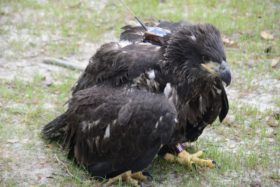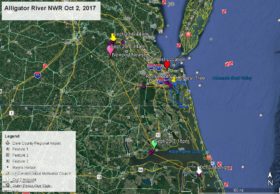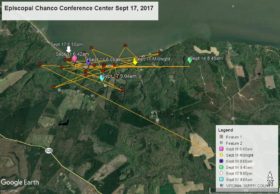Richmond Eagles First Egg Feb 8
Azalea in Pembroke – Va Beach
February 8, 2012Camellia Back at Lake Joyce Feb 11
February 12, 2012The bald eagle pair in Richmond, Va have their first egg as of 5:44pm Feb, 8, 2012. This live bald eagle cam is provided by The Center for Conservation Biology and can be viewed at www.ustream.com/richmondeagles.
This link will allow you to see the video of the egg being laid – http://www.youtube.com/watch?v=6cnvIQshthA






9 Comments
Beautiful, isn’t it? Thanks for the update
Thanks, Reese. I wasn’t watching at the time, so the video is a great gift. Thanks to you and CCB and RTD and the eagles!
Response – Hi Nancy – Hope you and Mike coming to TATC reunion Mar 24.
Norfolk will be next hopefully 🙂
Is this the first egg of the season for the Richmond nest or the first egg ever for this pair? It sure looked like an easy “labor”.
Response – Established pair that has produced young before
Good Morning REESE,
I have one question. What is the black spots on this egg? It is not a hole is it? I always watch the Norfolk pair, this year nothing like years before, for anyone I guess. I have voted for #2, but I think I am going to b wrong,,,but I dont even think that DAD knows! Thank you for your talent…
Response – I noticed the dark spots as well. The egg would have been wet when laid, and it most likely rolled over and picked up some dirt or nest material that stuck to the egg.
Oh, before I go, Thank You for that video of the swimming eagle, it was great……………
The egg was uncovered late last night for quite some time. I was surprised to see it alone in the nest when I checked late at night. Someone said it was a full 90 minutes uncovered. Is this a typical behavior in freezing temps.
Response – Eagles do sometimes leave their eggs uncovered, especially the first and second eggs, but 90 minutes is quite a long time. We have to assume they know what they are doing.
I also saw the egg uncovered for what I thought was a long time in this cold! I wondered if this is a bad sign. Is this a new mother?
Reese, I’m making a compilation video of the NBG nest and like to use some of your screen captures if you give permission to do so. I’m just going to share this video online and will give credit. Thanks for your consideration.
Rhoda Gerig
Response – Rhoda – NBG owns the cameras so you need to contact them for permission.